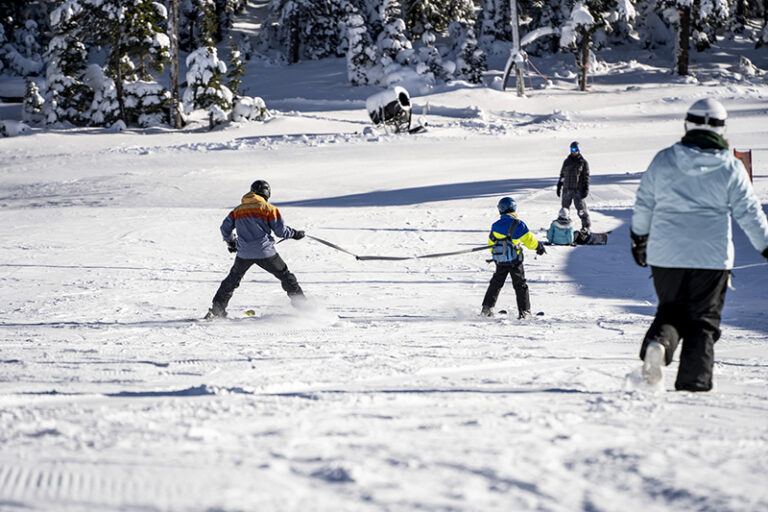The Joy of Hiking Hiking The Trailmaster Way
John McKinney, The Trailmaster
Wilderness Press, 2005, 288 pages.
With The Joy of Hiking, John McKinney gives us a new kind of hiking guide-one that not so much guides the hiker in the where to go and the how to get there but in the how to go and why we should. McKinney is “The Trailmaster;” he spent 18 years as the hiking columnist for the Los Angeles Times, has written a dozen guides and has hiked obsessively his whole life. This book gives hikers a trustworthy source to guide them both to and on the trail.
The Joy of Hiking addresses every concern that a hiker might have, even the ones they may be too embarrassed to ask. McKinney starts with basics-planning your trips, getting the most from your guidebook, and gearing up with a focus on the essentials. He discusses trails with great hints on how to scale steep ones without wearing out. He covers safety issues, hiking with animals, and how to deal with pesky annoyances. There is an illuminating list of hiking myths, tasty recipes, informative marginalia, and “hike- kus.” Worried about getting lost? Consult The Joy of Hiking. McKinney walks the reader through different methods of orienteering and gives advice on what to do if lost. At the end, he recommends long walks abroad and includes an appendix of hiking humor and songs, important contacts and funny questions and complaints to the U.S. Forest Service.
The book also covers aspects of hiking normally neglected: health benefits and hiking as a spiritual path. This is where The Joy of Hiking inspires. Hiking lowers blood pressure, improves mental health, and slows the aging process. For ages, it has also been equated with the spiritual fulfillment that comes from getting out into nature, communing with silence, and meditatively engaging the outdoors. Reading The Joy of Hiking instills a desire to put on boots and get into nature as a part of that spiritual journey in which a new vision of the world can arise.
Amy Sinisterra
Rare Bird: Pursuing The Mystery Of The Marbled Murrelet
Maria Mudd Ruth
Rodale, 2005, 298 pages.
If, in 2086, the last marbled murrelet (mer-lit) quietly dies off the coast of Southern Oregon, will it matter? What is it worth-the life of this small surface-diving sea bird of the Pacific coastal regions-a rapidly flying “baked potato with a beak?”
In Rare Bird, Maria Mudd Ruth, a naturalist writer and self-described “non- birder,” writes a moving detective story of the mystery surrounding the life of this elusive member of the auk family. Since its first “official” sighting in 1778, 185 years passed before scientists finally found a murrelet nest in Big Basin Redwoods State Park.
A seabird that nests high in coastal old-growth conifers, the murrelet randomly captured Ruth’s curiosity, and she soon became obsessed. Her quest soon led her to move her family closer to breeding grounds-across the country to California.
There remain thousands of murrelets living along the coastal states (90% of the population is in Alaska). Ruth asks, “Why should anyone be worried about the marbled murrelet when other species are in greater peril? …[because] in some areas populations have plummeted 40, 50, even 70 percent … it is not a matter of if but when the marbled murrelet will become extinct.”
The marbled murrelet’s fate rests in our clumsy hands. Incubating one lone egg each breeding season, often in the same branch of the same old-growth tree, the murrelet’s survival first asks that we acknowledge our impact on its world. Ten percent of its original wooded habitat along the Pacific coast remain, oil spills and petro-pollution devastate the birds and their food sources, and gill nets kill thousands of marbled murrelets each year (it is currently a federal listed endangered species-this status is currently under review).
Rare Bird is both a beautifully real epic of one special creature and a symbolic tale of our relationship to all of life. This book asks us to evaluate the cost of our industrialized society-and whether we have a moral obligation to know the consequences of consumption.
Angie Petro
The Humanure Handbook: A Guide to Composting Human Manure, third Ed.
Joseph Jenkins
Jenkins Publishing, 2005, 255 pages.
“The world is divided into two categories of people: those who shit in their drinking water supplies and those who don’t. We in the western world are in the former class.” Joseph Jenkins
“Tell me this book isn’t about what I think it’s about.” Anonymous.
In engaging detail, this book explains the incredible financial and biological cost of “modern” human manure disposal. Our sanitation systems waste a tremendous amount of drinking water to transport feces and urine, then “treat” the result by removing the suspended solid material. The euphemistically-named “solids” are then trucked to landfills, where they become a major contributor to global methane emissions (methane is 30 times more potent a greenhouse gas than carbon dioxide). The remaining wastewater contains huge quantities of what are essentially agricultural nutrients-nitrogen, potassium, phosphorus-which, if recovered and applied to farmland, would substantially replace the artificial fertilizer used today. Instead, this nutrient-rich water is discharged from sewage treatment plants into local waterways, where it causes significant environmental harm.
While the author makes the magnitude of the problem clear, he also details a simple solution: Compost your manure. Is this difficult or dangerous? No. The book fully explains how to compost “humanure” safely and easily without mess, flies or other problems.
To support his extraordinary claims, Jenkins provides extraordinary evidence, including 30 years’ experience composting his own family’s wastes. The book is impressively documented, and while public health authorities everywhere may be apoplectic, ordinary people should give this book a careful reading.
Ed Bryant













